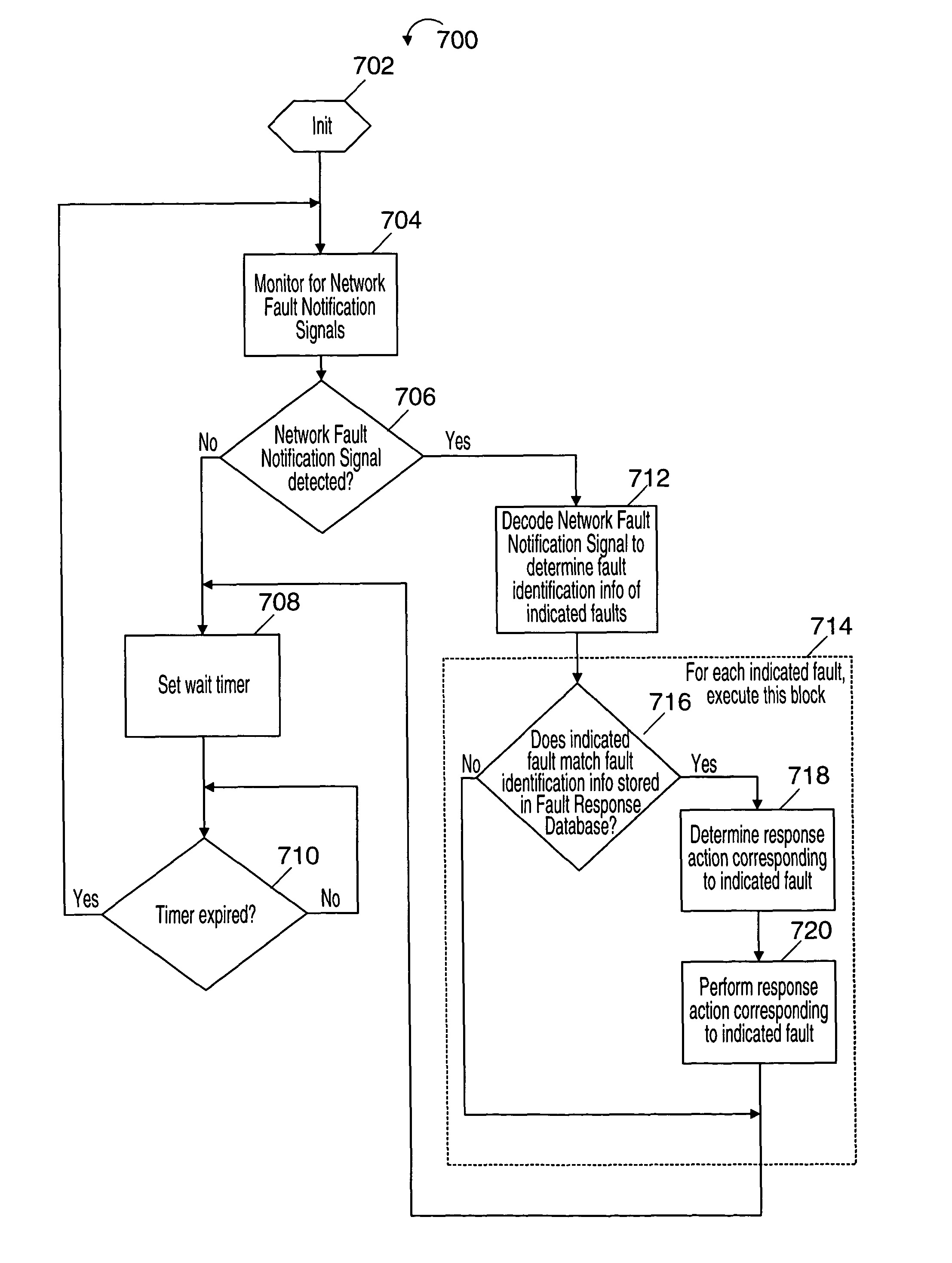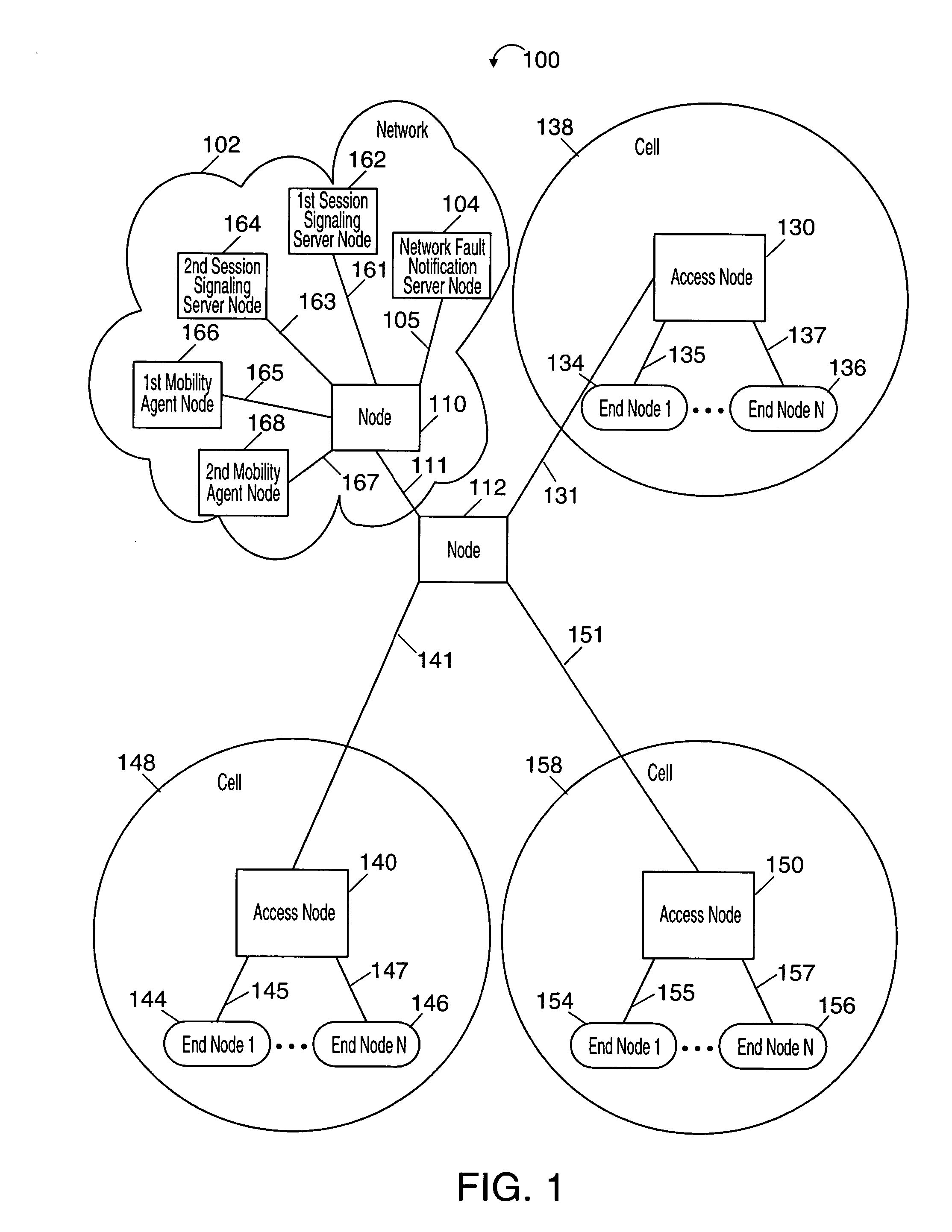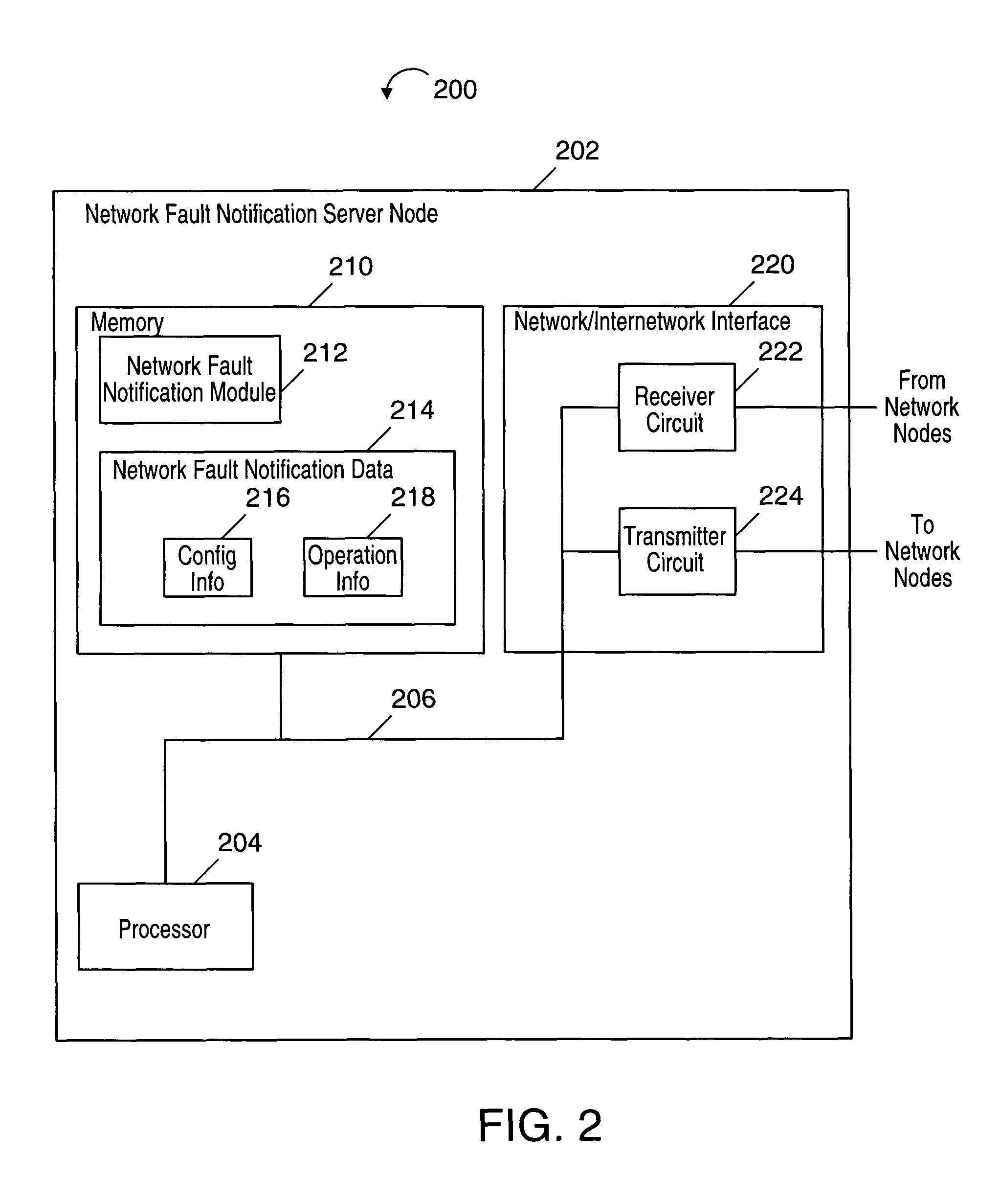Methods and apparatus for improving resiliency of communication networks
a communication network and fault tolerance technology, applied in the field of communication systems, can solve the problems of significant limitations, low system level functions may be redundant or of little value, and the burden of performing soft-state refresh, so as to eliminate the effect of faults reported, reduce service disruptions, and achieve high degree of fault toleran
- Summary
- Abstract
- Description
- Claims
- Application Information
AI Technical Summary
Benefits of technology
Problems solved by technology
Method used
Image
Examples
Embodiment Construction
[0023]FIG. 1 illustrates an exemplary communication system 100, e.g., a communication network, that comprises a plurality of nodes interconnected by communications links. The communications links of the system 100 may be implemented, for example, using wires, fiber optic cables, and / or wireless communications techniques. The exemplary communication system 100 includes a plurality of end nodes 134, 136, 144, 146, 154, 156, implemented in accordance with the present invention, which access the communication system via a plurality of access nodes 130, 140, 150, also implemented in accordance with the present invention. The end nodes 134, 136, 144, 146, 154, 156 may be, e.g., wireless communication devices, and the access nodes 130, 140, 150 may be, e.g., wireless access routers or base stations. The exemplary communication system 100 also includes a number of other nodes as may be needed to provide interconnectivity or to provide specific services or functions. Specifically, the exempl...
PUM
 Login to View More
Login to View More Abstract
Description
Claims
Application Information
 Login to View More
Login to View More - R&D
- Intellectual Property
- Life Sciences
- Materials
- Tech Scout
- Unparalleled Data Quality
- Higher Quality Content
- 60% Fewer Hallucinations
Browse by: Latest US Patents, China's latest patents, Technical Efficacy Thesaurus, Application Domain, Technology Topic, Popular Technical Reports.
© 2025 PatSnap. All rights reserved.Legal|Privacy policy|Modern Slavery Act Transparency Statement|Sitemap|About US| Contact US: help@patsnap.com



